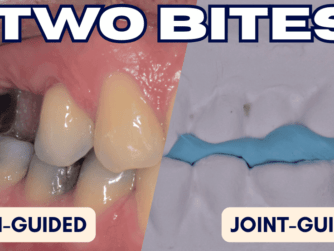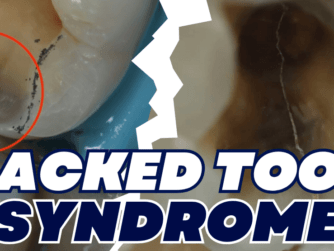Podcast: Play in new window | Download ()
Subscribe: RSS
You’re faced with a beautiful crown with what seems like a decent root filling – but there’s an apical infection present. Is the answer always endodontic re-treatment? When should we instead consider apical surgery so we can clear the infection WITHOUT drilling through the crown or having to dismantle posts?
In this episode, specialist endodontist Dr. Peter Raftery and his associate Dr. Manpreet Dhesi will be talking about the Apicoectomy procedure that can be used to treat root-filled teeth using a ‘retrograde’ approach. They will discuss about how it fits into general dentistry, its indications and contraindications, its cost analysis vs implants and and the entire protocol for performing Apicoectomy
Protrusive Dental Pearl: The periradicular surgery guidelines issued by BES and the Royal College of Surgeons. Download the guidelines about periradicular surgery or on the app under the Protrusive Vault (where all the different files and infographics and the different things that you get as a Protrusive premium member)
Download Protrusive App on iOS and Android and Claim your Verifiable CPD/CE by answering a few questions + You can get EARLY ACCESS to the episode + EXCLUSIVE content
Highlights of this episode:
- 1:37 The Protrusive Dental Pearl
- 3:32 Dr. Peter Raftery’s introduction
- 4:05 Dr. Manpreet Dhesi’s introduction
- 5:16 What is Apicoectomy?
- 6:29 Oral Surgeons vs Endodontists?
- 8:48 Is a Microscope mandatory for Apicoectomy?
- 10:08 Apicoectomy for posteriors
- 11:00 Isolation Protocol for Anterior Apicoectomies
- 11:35 Apicoectomy Protocol
- 15:03 Disinfection Protocol
- 18:41 Moisture control from the bleeding
- 20:43 Risk of surgical emphysema – Is special handpiece needed?
- 21:52 Indications and Contraindications for Apicoectomy
- 27:46 Endodontic Re-treatment
- 29:05 Cost benefit analysis of Apicoectomy
- 31:20 Success rate for Apicoectomy
- 34:19 Case Scenario 1: 82-year old patient with a singular crown, root filling and a radicular pathology
- 42:10 Retrograde fillings of choice
- 44:09 Grafting after Apicoectomy – is it needed?
- 45:04 Equipments for Apicoectomy
- 47:11 Learning more about Apicoectomy
Apical Microsurgery Instrument Kit- the mirror, the pluggers, and the little curettes by Hu-Friedy UK
If you enjoyed this episode, check this another episode by Dr. Peter Raftery: How to Save ‘Hopeless’ Teeth with the Surgical Extrusion Technique







